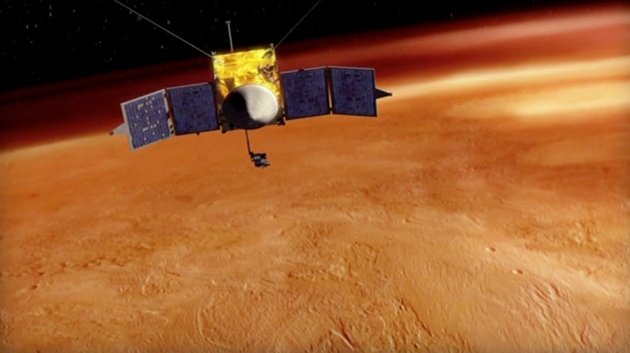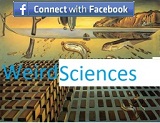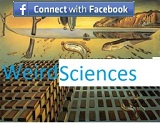Multifunctional Carbon Nanotubes – Introduction and Applications of Multifunctional Carbon Nanotubes
February 19, 2011 Leave a comment
Over the past several decades there has been an explosive growth in research and development related to nano materials. Among these one material, carbon Nanotubes, has led the way in terms of its fascinating structure as well as its ability to provide function-specific applications ranging from electronics, to energy and biotechnology. Carbon nanotubes (CNTs) can be viewed as carbon whiskers, which are tubules of nanometer dimensions with properties close to that of an ideal graphite fiber. Due to their distinctive structures they can be considered as matter in one-dimension (1D).
In other words, a carbon nanotube is a honeycomb lattice rolled on to itself, with diameters of the order of nanometers and lengths of up to several micrometers. Generally, two distinct types of CNTs exist depending whether the tubes are made of more than one graphene sheet (multi walled carbon nanotube, MWNT) or only one graphene sheet (single walled carbon nanotube, SWNT). For a detailed description on CNTs please refer to the article by Prof. M. Endo.
A Truly Multifunctional Material
Irrespective of the number of walls, CNTs are envisioned as new engineering materials which possess unique physical properties suitable for a variety of applications. Such properties include large mechanical strength, exotic electrical characteristics and superb chemical and thermal stability. Specifically, the development of techniques for growing carbon nanotubes in a very controlled fashion (such as aligned CNT architectures on various substrates ) as well as on a large scale, presents investigators all over the world with enhanced possibilities for applying these controlled CNTs architectures to the fields of Vacuum microelectronics, Cold-cathode flat panel displays, Field emission devices, Vertical interconnect assemblies, Gas breakdown sensors, Bio Filtration, On chip thermal management, etc.
Apart from their outstanding structural integrity as well as chemical stability, the property that makes carbon nanotubes truly multifunctional in nature is the fact that carbon nanotubes have lot to offer (literally) in terms of specific surface area. Depending on the type of CNTs the specific surface areas may range from 50 m2/gm to several hundreds of m2/gm and with appropriate purification processes the specific surface areas can be increased up to ~1000 m2/gm.
Extensive theoretical and experimental studies have shown that the presence of large specific surface areas is accompanied by the availability of different adsorption sites on the nanotubes. For example, In CNTs produced using catalyst assisted chemical vapor deposition the adsorption occurs only on the outer surface of the curved cylindrical wall of the CNTs. This is because the production process of the CNTs using metal catalysts usually leads to nanotubes with closed ends, thereby restricting the access of the hollow interior space of the tube.
However, there are simple procedures (mild chemical or thermal treatments) which can remove the end caps of the MWNTs thereby presenting the possibility of another adsorption site (inside the tube) in MWNTs as schematically shown in Figure 1. Similarly, the large scale production process of SWNTs lead to the bundling of the SWNTs. Due to this bundling effect, SWNT bundles provide various high energy binding sites (for example grooves, Figure 1.). What this means is then that large surfaces are available in small volume and these surfaces can interact with other species or can be tailored and functionalized.
.jpg) |
|
Figure 1: Possible binding sites available for adsorption on (left) MWNTs and (right) SWNTs surfaces.
|
Our group’s own research interests are directed into utilizing these materials in different applications related to energy and the environment, where their high specific surfaces areas play a crucial role. Two of such energy related applications are discussed below:
- CNT Based Electrochemical Double Layer Capacitors
- CNT Based catalyst support
CNT Based Electrochemical Double Layer Capacitors
Electrochemical Double Layer Capacitors (EDLC’s: Also referred to as Super Capacitors and Ultra-Capacitors) are envisioned as devices that will have the capability of providing high energy density as well as high power density. With extremely high life-span and charge-discharge cycle capabilities EDLC’s are finding versatile applications in the military, space, transportation, telecommunications and nanoelectronics industries.
An EDLC contains two non reactive porous plates (electrodes or collectors with extremely high specific surface area), separated by a porous membrane and immersed in an electrolyte. Various studies have shown the suitability of CNTs as EDLC electrodes. However, proper integration of CNTs with collector electrodes in EDLCs are needed for minimizing the overall device resistance in order to enhance the performance of CNT based supercapacitors. A strategy for achieving this could be growing CNTs directly on metal surfaces and using them as EDLC electrodes (Figure 2). EDLC electrodes with very low equivalent series resistance (ESR) and high power densities can be obtained by using such approaches.
CNT Based Catalyst Support
Catalysts play an important role in our existence today. Catalysts are small particles (~ 10-9 meter, or nanometer) which due to their unique surface properties can enhance important chemical reactions leading to useful products. In any kind of catalytic process, the catalysts are dispersed on high surface area materials, known as the catalyst support. The support provides mechanical strength to the catalysts in addition to enhance the specific catalytic surface and enhancing the reaction rates. CNTs, due to their high specific surface areas, outstanding mechanical as well as thermal properties and chemically stability can potentially become the material of choice for catalyst support in a variety of catalyzed chemical reactions.
We are presently exploring the idea of using CNTs as catalyst support in the Fischer Tropsch (FT) synthesis process. The FT reaction can convert a mixture of carbon monoxide and hydrogen in to a wide range of straight chained and branched olefins and paraffins and oxygenates (leading to the production of high quality synthetic fuels). Our preliminary FT synthesis experiments on CNT supported FT catalysts (generally cobalt and iron) shows that the conversion of CO and H2 obtained with FT catalyst loaded CNTs is orders of magnitude higher than that obtained with conventional FT catalysts (Figure 3), indicating that CNTs offer a new breed of non-oxide based catalyst supports with superior performance for FT synthesis.
.jpg) |
|
Figure 3:CNT paper used as catalyst support for FT synthesis and comparison of conversion ratio’s of Co and H2
|
So far, CNT research has provided substantial excitement, and novel possibilities in developing applications based on interdisciplinary nanotechnology. The area of large scale growth of CNTs is quiet mature now and hence it could be expected that several solid large volume applications will emerge in the near future.
[Source: Azonano]

.jpg)






















 To get the highest resolution from the scanning tunneling microscope, the system was then cooled to a few degrees above absolute zero. Both the graphene and the platinum contracted – but the platinum shrank more, with the result that excess graphene pushed up into bubbles, measuring four to 10 nanometers (billionths of a meter) across and from a third to more than two nanometers high. To confirm that the experimental observations were consistent with theoretical predictions, Castro Neto worked with Guinea to model a nanobubble typical of those found by the Crommie group. The resulting theoretical picture was a near-match to what the experimenters had observed: a strain-induced pseudo-magnetic field some 200 to 400 tesla strong in the regions of greatest strain, for nanobubbles of the correct size.
To get the highest resolution from the scanning tunneling microscope, the system was then cooled to a few degrees above absolute zero. Both the graphene and the platinum contracted – but the platinum shrank more, with the result that excess graphene pushed up into bubbles, measuring four to 10 nanometers (billionths of a meter) across and from a third to more than two nanometers high. To confirm that the experimental observations were consistent with theoretical predictions, Castro Neto worked with Guinea to model a nanobubble typical of those found by the Crommie group. The resulting theoretical picture was a near-match to what the experimenters had observed: a strain-induced pseudo-magnetic field some 200 to 400 tesla strong in the regions of greatest strain, for nanobubbles of the correct size.





